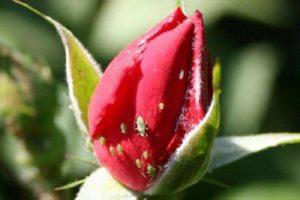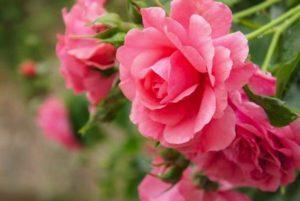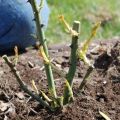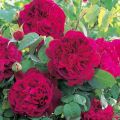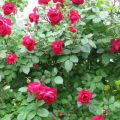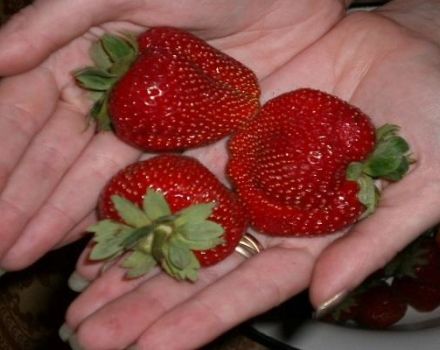How to treat black spot on roses, effective treatments
Black spot is one of the most common fungal diseases in roses, so it is important to know how to treat it. When this infection is affected, rose bushes quickly lose their attractiveness, as the disease progresses rapidly. This means that you also need to react immediately.
Reasons for the appearance
There can be several reasons for this disease:
- When the weather is warm and humid for a long period of time, ideal conditions for reproduction are created for fungi. Therefore, in this weather, roses often suffer from black spot.
- If a rose bush grows in a low place or in a place that is too thick, then the risk of this disease also increases. Indeed, in such places, air circulation is slowed down, and moisture evaporates less actively.
- Improper feeding, its lack or excess may also be the reason.
- One of the reasons is the lack of calcium in the soil where the bushes grow.
Important! Spores of the black spot fungus are carried by wind, water or insects, so it is important to treat the diseased plant in order to prevent disease and other bushes.
What is dangerous for plants
This disease is especially dangerous for young plants. Affected bushes develop slowly, young branches do not stiffen and shed their foliage. This is fraught with freezing during the frost period. Even if the roses survive the winter successfully without getting the treatment they need, they will die after 2-3 years.
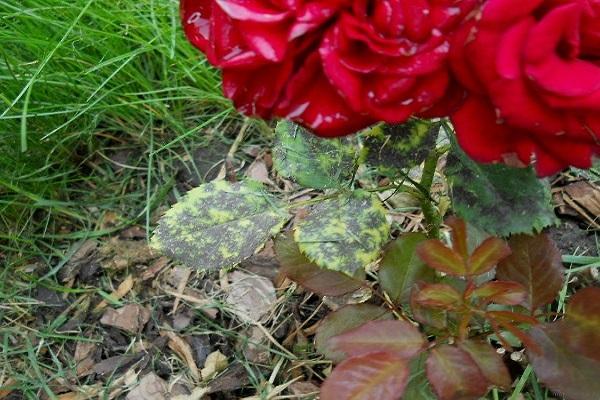
Signs and symptoms of bush damage
Usually spotting appears in the second half of summer. It is not uncommon for several outbreaks to occur in a single season. Leaves and young shoots of bushes suffer.
When infected, gardeners can observe the following symptoms:
- stopping the growth and development of the plant;
- the appearance of dark spots on the foliage, which increase in size and number;
- the spots are sun-shaped;
- spots combine with each other over time;
- the disease starts from the lower parts of the bush, and gradually moves up;
- foliage with spots begins to turn yellow, curl and crumble;
- bushes become much less common;
- the number of flowers decreases.
Means and technology for the treatment of rose bushes
After the gardener is convinced that the shrubs are affected by this particular disease, it is necessary to start treatment with drugs.
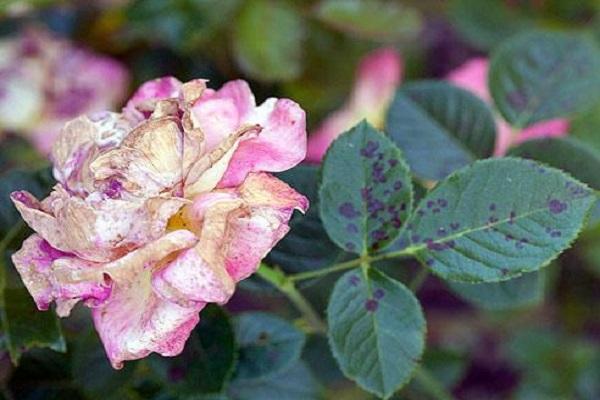
"Speed"
It is a complex fungicide with a pronounced therapeutic effect and long-term preventive action against fungal infections. After 2 hours, the active substance spreads throughout the vascular system of the bush and begins to act.
A significant advantage of this drug is the possibility of processing at any phase of plant development. "Skor" is sold in the form of an emulsion concentrate, packaged in ampoules or bottles.
For the treatment of black spot, the drug is diluted at the rate of 5 ml per 10 liters of water. The fungicide is first dissolved in a small amount of warm water, and then gradually brought to the required volume. The solution is prepared just before processing.
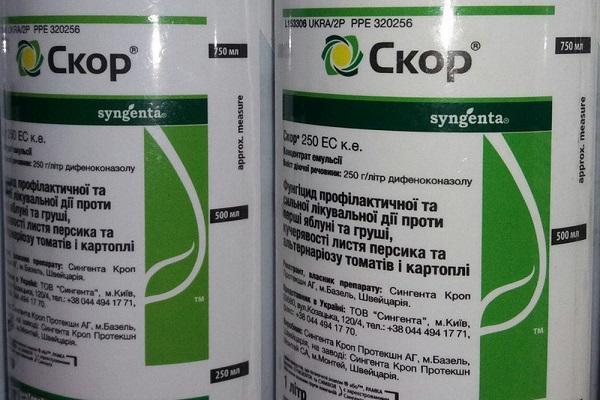
"Abiga Peak"
This fungicide is used to combat fungal and bacterial diseases of all plant species. When processed, it adheres evenly and tightly to the surface of plants. Stays on the bushes for a long time, thereby protecting them even in adverse conditions. The active ingredient of the drug is capable of working even at low temperatures.
For spraying roses, the drug in an amount of 40-50 ml is dissolved in 10 liters of water. First, the medicine is dissolved in a small volume of water and then brought to 10 liters. The prepared solution should be used within 24 hours.
Spraying is carried out twice, in the morning or evening. The break between treatments should be 2-3 weeks.
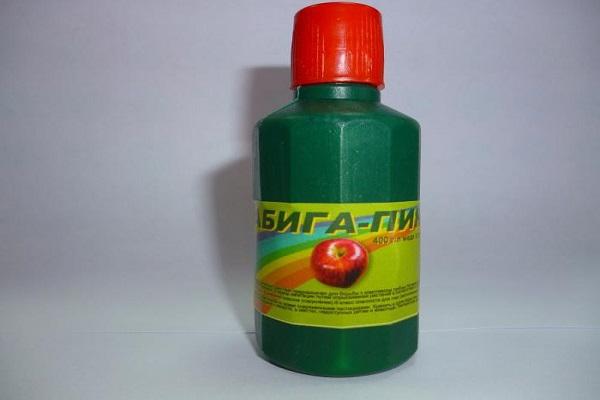
Ridomil Gold
Fungicide "Ridomil Gold" is used to get rid of different types of fungus, including the one that causes black spot. When treated with this drug, a kind of protective film appears on the leaves and stems of rose bushes that destroys the fungus. Ridomil Gold is effective at any stage of the disease.
To prepare a working solution, you need to dissolve 25 g of the substance in 10 liters of water. Immediately after complete dissolution of the drug, you can start processing. After half an hour, the treated plants can be watered. Long-term rains will not wash off the medicine. Processing is carried out 3-4 times per season.
This fungicide is safe for all plants, but its remains should not be poured into water bodies. This will have a detrimental effect on their inhabitants.
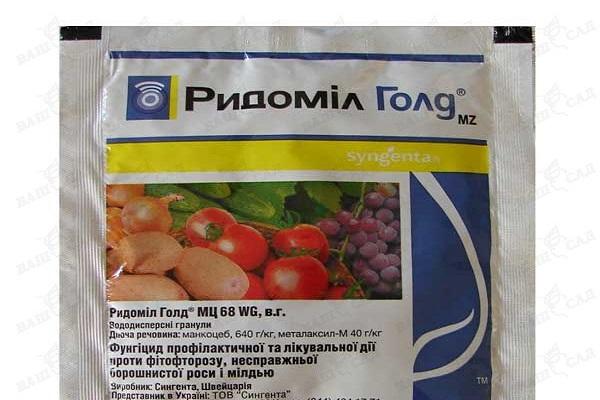
Bordeaux liquid
Bordeaux liquid is a mixture of slaked lime and copper sulfate. Effectively fights against fungal plant diseases. It is not only a fungicide, but also a bactericide. It has the highest adhesion among all fungicides.
The prepared solution has a sky-blue color with a neutral or slightly alkaline reaction. A highly alkaline solution will not adhere well to plants, therefore, it will be ineffective.
Bordeaux mixture is used to treat rose bushes in early spring, and the soil around the plant is also sprayed. To do this, dilute 200-300 g of the mixture in a bucket of water. In the summer, the treatment is repeated 3-4 times at intervals of 7-10 days, diluting 100 g of Bordeaux liquid in a bucket of water.

Previkur Energy
The fungicide has a protective and growth stimulating effect. Within an hour after treatment, the active ingredient completely saturates the plant. Its protection extends not only to processed rose shoots, but also to new leaves and shoots. Increases the immune system of the hives and their resistance to fungal infections.
To prepare a working solution, dilute with 15 ml of the fungicide in 10 liters of water.
"Topaz"
It is a systemic fungicide used to treat and prevent fungal diseases. Its effect lasts from 14 to 18 days from the date of processing.
The tool is able to stop the development of the disease within 2-3 hours after spraying the bushes. It can be combined with other products to achieve comprehensive rose protection.
One of the advantages of "Topaz" is its economical consumption. For 10 liters of water, only 4 ml of the drug is needed. Prepare the product before use and consume everything at once. Processing is carried out in the morning or evening in calm weather.
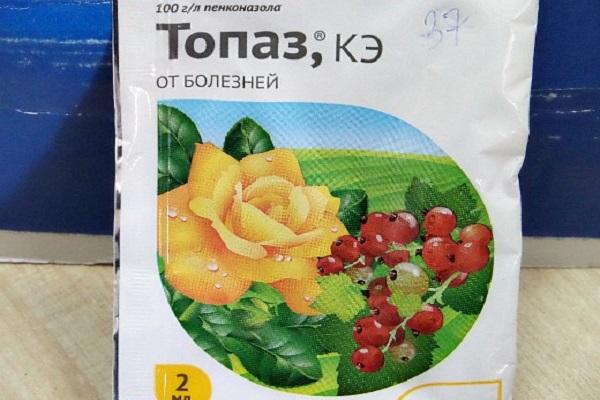
"Profit Gold"
This fungicide contains, in addition to the active ingredient, manganese and zinc. These micronutrients improve enzyme function.
Used to heal roses and provide long-term protection against further infestations. To prepare the solution, you need 4 g of the medicine, they are diluted in 10 liters of water.
When working with the drug, you should be careful, as it is quite toxic to humans and animals.

Preventive actions
In order to avoid or at least reduce the risk of black spot disease, you need to take certain preventive actions.
Optimal growing conditions
Before planting rose bushes in your area, you need to think not only about where they will look more beautiful, but also about where it will be safer for them:
- bushes should be planted in areas well warmed by the sun;
- the soil should be light, not retaining moisture;
- water should not accumulate under the bush;
- you should not plant roses too tightly to each other or to other plants;
- produce moderate watering.
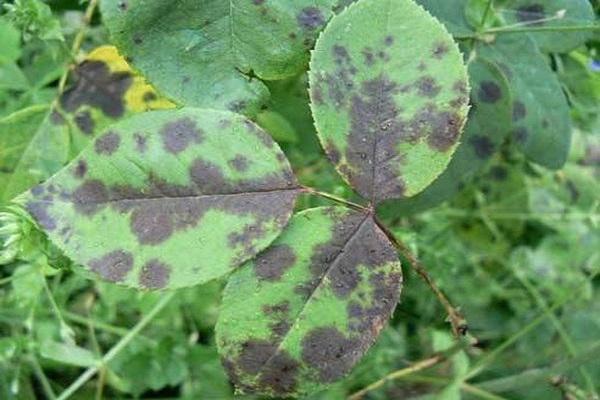
External examination of the bush
It is important to periodically inspect the bushes. Indeed, a disease detected in time will make it possible to get rid of it faster and prevent it from spreading.
Weed removal and soil loosening
Timely removal of weeds will reduce the spread of pathogens and allow the sun's rays to better warm the soil. Loosening the soil under the bushes also helps to dry the soil and allows oxygen to get to the roots of the bushes.
Feeding rationing
It is imperative to feed rose bushes, while you should adhere to certain norms. Top dressing with potassium is carried out from spring to autumn. The first feeding is carried out at the end of May, the second at the beginning of June, the third at the end of July, then in the middle of August and at the beginning of September.
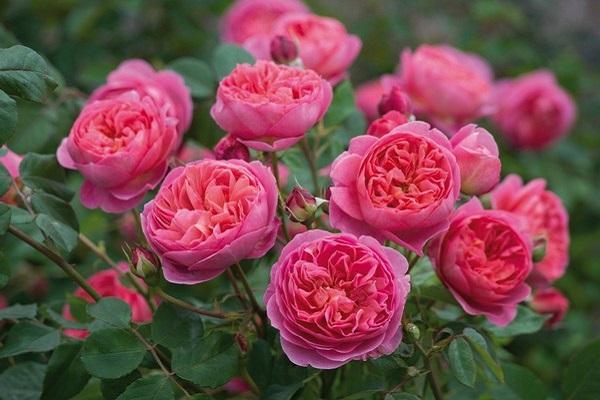
Top dressing with liquid agents is carried out only at the root. It is impossible to carry out processing in the evening and at night.
Disease and insect treatment
Such treatments must be carried out in a timely manner, since diseases and insect attacks significantly reduce the immunity of roses. And in the future, shrubs become more vulnerable to black spot and other fungi.
Timely prune
Affected shoots should be removed immediately after opening the bushes from wintering. Trim them to healthy tissue. Slices are treated with garden pitch.

Disinfect the instrument
After each cut off pink branch, the pruner is treated with alcohol, vodka or a strong solution of potassium permanganate. Other alcohol-based or chlorine-based solutions are also suitable.
In the fall, harvest dry foliage and dig up the soil
In autumn, dry foliage must be removed; it can become a shelter for pests and fungal spores. They also remove the topsoil and dig up the area around the bushes. Foliage and soil removed must not be sent to the compost heap to avoid contamination. Better to burn them.
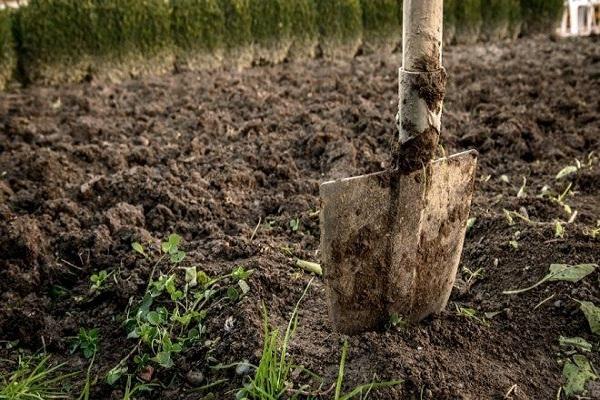
Choose resistant varieties
It is necessary to remove varieties from the site that begin to get sick most often and earlier than others. When buying new rose seedlings, you need to give preference to varieties that are more resistant to disease. After all, breeders are constantly working to increase the resistance of roses to fungi, including black spot.
